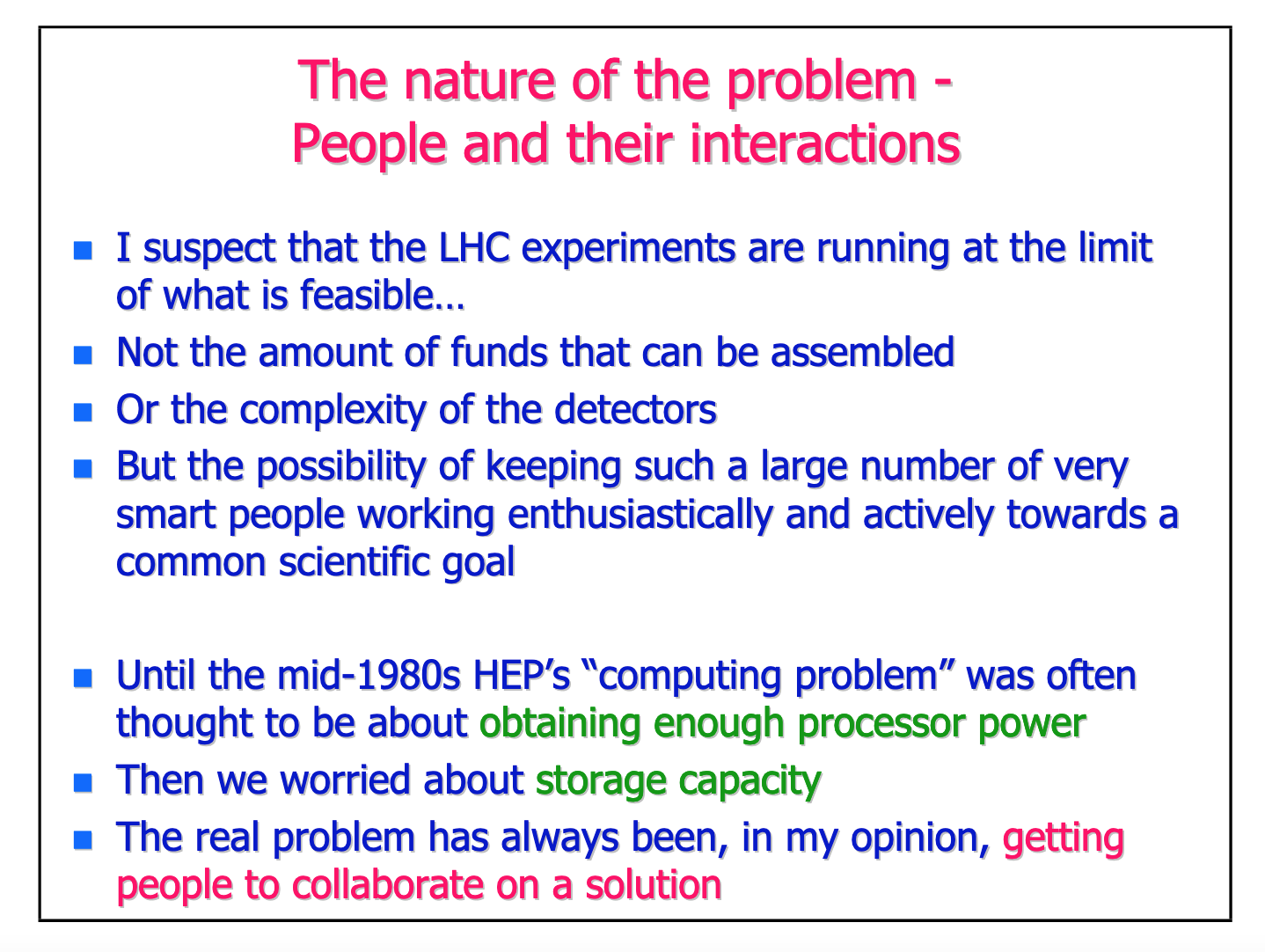History of WLCG
History of WLCG

History of WLCG

The history (and indeed the present and future!) of WLCG is as much about people and collaboration as about technology.
Although the LHC experiments were designed and built from 1984 onwards, the challenge of LHC computing was only tackled seriously much later, at the end of the ‘90s.
Challenges
The LHC was (and is) expected to run for many years and produce far more data than technology at the time could reasonably handle in a single location. How could the challenges of mass data storage, processing and data transfer be dealt with?
In 1999, the Grid paradigm was emerging, initially proposed in 1999 by Ian Foster and Carl Kesselman.
CERN did not have the computing, financial or human resources on-site to crunch the immense data tsunami expected from the LHC.
Therefore in 2002 CERN turned to grid computing to share the burden with computer centres around the world.
The resulting Worldwide LHC Computing Grid was built on the ideas of grid technology proposed by Foster & Kesselman, with hopes that most of its challenges - including mass storage, processing transfer problems - would be solved by this paradigm.
